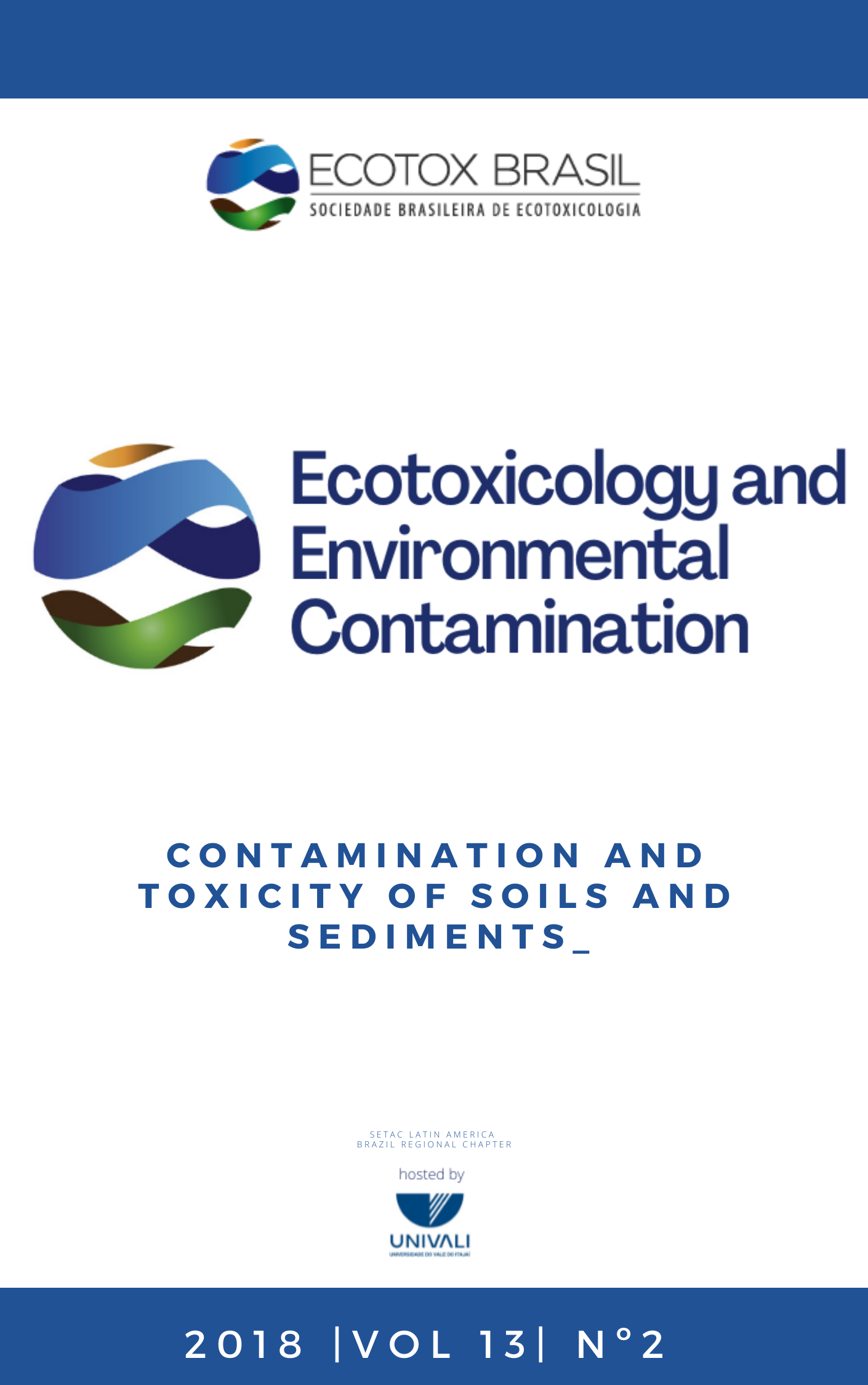Effect of biostimulation treatments on the toxicity of oil-contaminated mangrove sediment
DOI:
https://doi.org/10.5132/eec.2018.02.13Abstract
Bioassays with the marine copepod Tisbe biminiensis were used to evaluate the efficiency of three bioremediation treatments on oil contaminated sediments. Two biostimulation treatments (adding NPK and OSMOCOTE fertilizers) and a natural attenuation treatment (experimental control, without fertilizers) were evaluated. The addition of NPK fertilizer had a strong lethal effect on T. biminiensis females probably associated to ammonium compounds, but this effect disappeared after 15 days. The OSMOCOTE releases nutrients in a gradual manner and as such, had no lethal effect on T. biminiensis females. In the natural attenuation treatment, the fecundity of T. biminiensis increased 200% and this indicates that natural attenuation treatment effectively attenuated the sub-lethal toxicity. Biostimulation treatments were not more efficient in obtaining lower toxicity levels of oil contaminated sediment compared to natural attenuation as the recovery of the endpoint affected by contamination (fecundity) increased at the same rate in the 3 treatments over time. In conclusion, adding fertilizers with high ammonium compound concentrations and rapid release is not recommended as a bioremediation treatment in mangroves.
Downloads
Downloads
Published
How to Cite
Issue
Section
License
Copyright © 2006 ECOTOX-Brasil
Copyright notice: It is a condition for publication that manuscripts submitted to this journal have not yet been published and will not be simultaneously submitted or published elsewhere. By submitting a manuscript, the authors agree that copyright for their article is transferred to the Sociedade Brasileira de Ecotoxicologia (ECOTOX-Brasil) if and when the article is accepted for publication. The copyright covers the exclusive rights to reproduce and distribute articles, including reprints, photographic reproductions or any other reproduction of a similar nature, including translations. No part of this publication may be reproduced, stored in a retrieval system or transmitted in any form or by any means, electronic, mechanical, photocopying, recording or otherwise, without permission of the publisher.
Notice: While every effort is made by the EEC, editors and editorial board to see that no inaccurate or misleading data, opinions or statements appear in this journal, they wish to make it clear that the contents of the articles and advertisements published herein are the sole responsibility of the contributors or advertisers concerned. Accordingly, the EEC, the editorial board and editors and their respective employees, officers and agents accept no responsibility or liability whatsoever for the consequences of any inaccurate or misleading data, opinion or statement.




